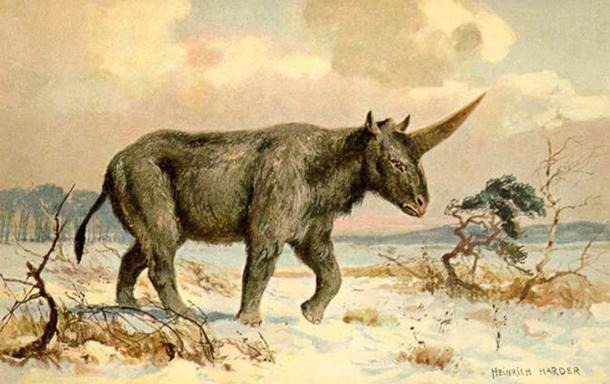It’s interesting for everyone, whether this is a legendary creature.
Elasmotherium is an extinct type of rhino, also known as a giant rhino and a giant Siberian unicorn.
According to preliminary data, this monster has about 2 meters in height, 4.5 meters in length and weighs 4 tons. It is believed that they lived in Eurasia in the era of the late Pliocene and Pleistocene.
They were discovered 2.6 million years ago, but recently discovered fossils were discovered about 29,000 years ago. For the first time, elasmotherium was named in 1808 by Johan Fisher von Waldheim, the regular director of the Museum of Natural History of Moscow University.
A perfectly preserved skull was discovered in the Pavlodar region of Kazakhstan in March 2016. Judging by the size and condition of the skull, this is a very old male, but the cause of the death of the monster is unknown.

A horn is a hotly discussed topic, and many people argue about whether there is a horn, how great it is and why it is used. Protection, attracting comrades, reflecting competitors, sweeping snow from the grass and digging water and roots – all these are theories about the function of the whistle.
The frontal ledge on the skull, which attracted the attention of paleontologists in the 19th century and was immediately interpreted as the main part of the skull, was the main evidence of the existence of a horned Siberian unicorn. Certificates also indicate that the horn is not round. The fossil with a partially healed non -rounded chopped wound at the base, usually interpreted as a result of a horn fight with another male, supports this theory.

While the males fought for the territory, their range extended from the Don River to the east of modern Kazakhstan. The preserved data indicate that these ancient rhinos lived for a long time in the southeastern part of the West Siberian plain.
However, there is no clear explanation of why Siberian unicorns die. Researchers have studied specific environmental factors that could lead to the disappearance of this type, as this can give an answer to the extinction, which are faced with other species today.
The legend of a unicorn, or a one -rope beast, has existed in China since the warring kingdoms and in Eastern Europe for millennia, with a general description of the beast with one horn and great stature.

Vasily Radlov opened the legend of a “giant black bull”, killed by a spear among the Yakuts of Siberia in 1866. They say that this monster had one horn or was associated with a large white or blue rune bull with a big horn. On his forehead.
The Ballad collection, known as the “pigeon muzzle” or “The Book of a pigeon” from medieval Russia, depicting a righteous unicorn fighting a lion, is a lie. The unicorn in these stories is considered the mother and father of all animals, and he lives on Holy Mountain.
However, this creature appears in other religious texts as a symbolic, not a real being.

Although myths may indicate the existence of this creature, additional research and fossils are necessary to determine whether this monster existed.
Want to see what a mythical creature would look like if it were real?






